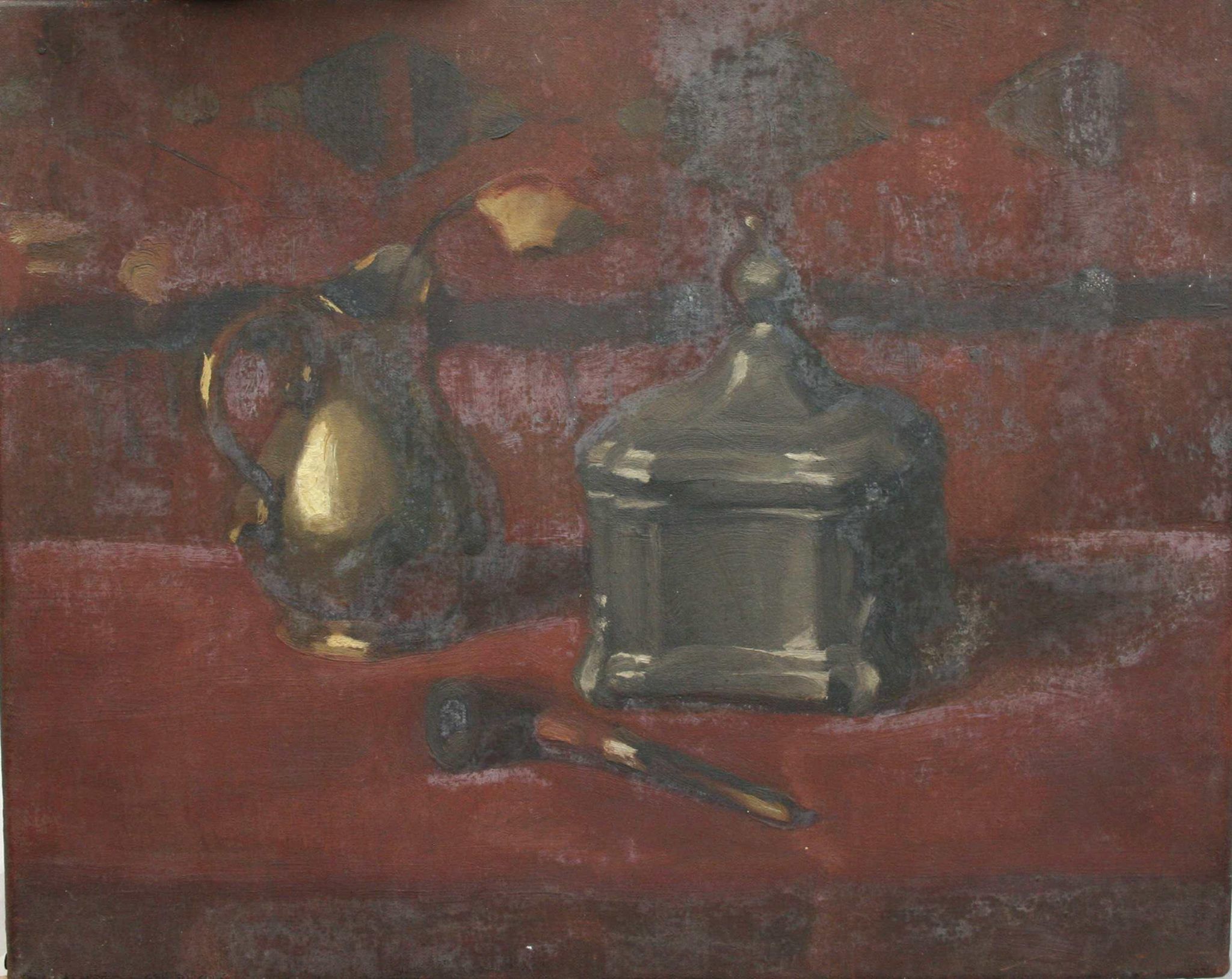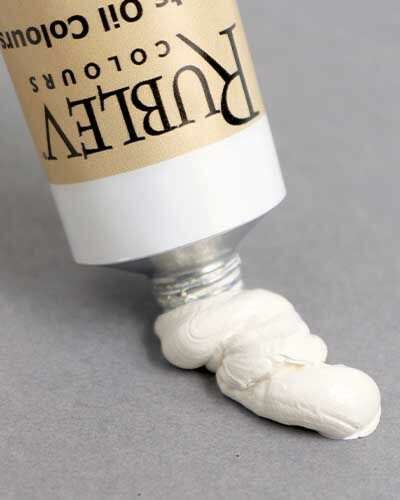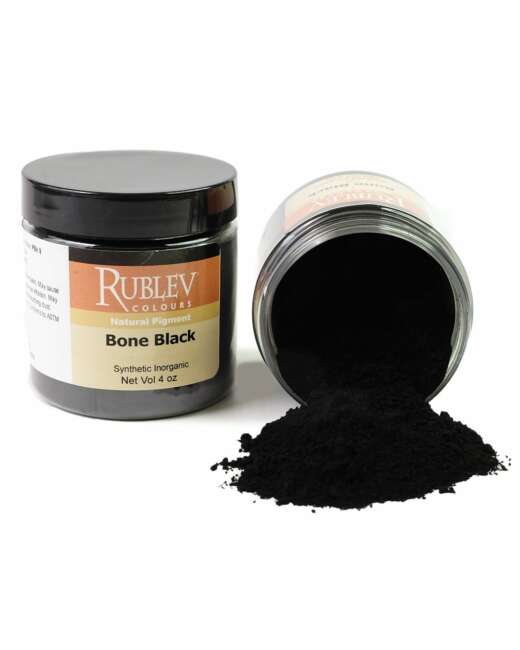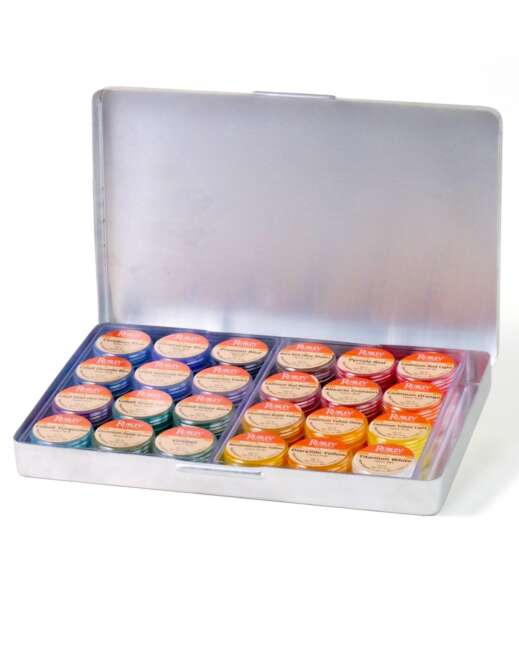
The white phenomena in this painting are only present in areas with a darker color, creating an aesthetic problem by disturbing the image and reducing the contrast.
© Sara Molinari 2013 (Molinari 2013)
A whitish surface appearance on oil paintings is a phenomenon of modern oil paintings. While painters have traditionally described such hazes as blooming or blanching, the terminology has not yet caught up with the different causes. Other terms currently used are efflorescence, exudation, fatty acid deposit or migration, saponification, crystallization, chalking, mold, and ghost images.
It is believed that several factors cause the appearance of haze, principally the migration of free fatty acids or metal soaps to the surface of the paint film. The following have been identified as factors that increase the likelihood of haze on paint surfaces:
-
Slow-drying paints (carbon black, alizarin crimson, titanium dioxide) (Schilling 1998, 1999)
-
Walnut or poppy oil medium (Schilling 1998, 1999)
-
Extender pigments and additives in modern paints, such as aluminum, magnesium, and zinc stearates, which themselves contain high percentages of free fatty acids (Schilling 1998, 1999, Ordonez 1998)
-
Excessive amounts of bodied oil are added to paint (Koller 1990)
-
Zinc white in the ground or paint layer is exacerbated by moisture (Koyano 1987)
-
Addition of wax to paint (Ordonez 1998)
-
Painting on low- or non-absorbent substrates so that free fatty acids are not absorbed (Singer 1995, Rimer 1999)
-
Lack of oxygen and airflow, such as paintings stored wrapped in plastic (Chan 2013)
Credit
This paper is based on information from the Conservation Wiki article “White Surface Hazes.”
Gridley, Mary, 2019. “White Surface Hazes.” Conservation Wiki. Paper
References
Chan, I. 2013. “The Materials, Techniques, and Conservation Challenges of Richard Serra’s Oilstick Screen Prints.” In The Book and Paper Group Annual, Vol. 32. 22–30.
Koller, Johann and Andreas Burmeister. 1990. “Blanching of Unvarnished Modern Paintings: A Case Study on a Painting by Serge Poliakoff.” In IIC Preprints Cleaning, Retouching and Coatings, Brussels Congress, 3-7 September 1990. 138–143.
Koyano, Kadokura. 1987. “Preliminary Report on Exam of Crystals found on Oil Paintings in Japan.” In preprints ICOM Committee for Conservation 8th Triennial Meeting Sydney, Australia 6-11 September 1987. 59–65.
Molinari, Sara. 2013. “White phenomena on the surfaces of 24 unvarnished paintings by Willem Witsen.” Conservation, Exposition, Restauration d'Objets d'Art. Paper
Ordonez, Eugena and John Twilley. 1998. “Clarifying the Haze, Efflorescence on Works of Art.” WAAC Newsletter Vol. 20, No. 1. Paper
Rimer, Bonnie, Inge Fiedler, Mary A Miller, Michael Cunningham and Jorrit D. J. van den Berg. 1998. "Investigation of Fatty Acid Migration in Alizarin Crimson Oil Paint in Two Works by Frank Stella." In AIC Paintings Specialty Group Postprints. St. Louis: AIC. 1–14.
Schilling, Michael R., David M. Carson, and Herant P. Khanjian. 1998. “Evaporation of Fatty Acids and the Formation of Ghost Images by Framed Oil Paintings,” WAAC Newsletter, Vol. 21, No. 1. 1–5. Paper
Schilling, Michael R., David M. Carson, and Herant P. Khanjian. 1999. “Gas Chromatographic Determination of the Fatty Acid and Glycerol content of Lipids. IV. Evaporation of Fatty Acids and the Formation of Ghost Images by Framed Oil Paintings.” In Proceedings of the 12th Triennial ICOM-CC Meeting, Lyon, 29 August–3 September 1999. Vol. I. 242–247.
Singer, Brian, Jim Devenport, and David Wise. 1995. “Examination of Blooming Problems in a Collection of Unvarnished Oil Paintings.” In The Conservator. Vol. 19. 3–9.
Traditional Oil Paints without Additives: Rublev Colours Artist Oils
Rublev Colours are different from other commercial oil colors. One reason is we use natural and historical pigments like those used by the old masters. Another is we make them as they did before modern oil colors—without additives.
Rublev Colours Artists Oils are formulated to maintain the unique characteristics of each pigment in oil. What you find in each tube is unique due to the pigment inside, giving you new choices of texture, opacity, consistency, tone, and hue. With Rublev Colours, you experience the transparency of yellow ocher, the pale coolness of green earth, and the crystalline glitter of blue azurite.
Color Particle by Particle
The particles of natural pigments are larger and more varied than pigments in modern artists’ oil colors. When we remember how crystalline pigments, such as azurite, malachite, and lazurite, were used in old masters’ paintings, it is easy to understand how these beautiful surfaces with broken lights were obtained. An examination, for instance, of azurite particles under the microscope at once reveals the beautiful mass of blue and blue-green crystals, reflecting light in all directions and thus, of course, enhancing the visual effect.
No Additives
Rublev Colours Artists Oils do not contain additives, such as fillers, driers, and stabilizers—simply pigment and oil. We sometimes use linseed oil in our paint, with a small amount of heat-bodied oil. Stabilizers, such as stearates and waxes, that diminish the individual effects of pigments are not added. Due to individual pigment characteristics, you will find different consistencies from color to color. Some colors brush out long, others short and buttery, and others are thixotropic. Rublev Colours Artists Oils have longer brushing consistency than most tube colors. Today, they are ideal for bristle and soft-hair brushes in fine rendering on fine-weave canvas and smooth panels.
Single Pigment Colors
When you see a color name on our label, you get just that—one pure pigment. For example, Rublev Colours Vermilion is not a hue but a pigment—pure red mercuric sulfide. In a tube of Rublev Colours Green Earth, you will not find a mixture of pigments but the real thing—green earth. And Rublev Colours Naples Yellow is pure lead antimonate. You won’t even find the word “genuine” used to describe Rublev Colours because all colors are simply that—genuine. All our earth colors have outstanding lightfastness, and most others are permanent when used at full strength. Rublev Colours Artists Oils offer an extraordinary range of tinting strength and an immense diversity between opacity and transparency.













